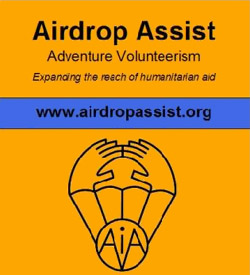Back in 1936, snow skiing was a sport that only a few dedicated individuals pursued. The primitive
conditions practically guaranteed that anyone foolish enough to ski would eventually be injured.
On the snowy slopes of a Vermont mountain, just that happened to Charles Minot "Minnie" Dole when
his ankle snapped in a fall. His friends went for help, but eventually had to toboggan him off the
slope themselves, using a piece of sheet metal roofing material as an improvised rescue sled. The
ankle fracture was so bad that Dole was told he would probably never ski again.
A few months later, one of Dole's friends who had helped him down the mountain was killed in a ski
racing accident.
Dole was not only determined to recover and ski again; he was also determined to do something
about making skiing safer. He co-founded the National Ski Patrol in 1938, modeling it after some
of the informal ski patrols at local ski areas and grafting on some of techniques used by Swiss
ski instructors and mountain guides. After World War II, skiing boomed in popularity, equipment
and services improved, and the National Ski Patrol is now the largest winter safety organization
in the world. To this day the NSP serves an invaluable function in preventing or responding to
skiing accidents with special training and equipment.
Skiing and skydiving have many parallels. They evolved over roughly the same time frame, and
advanced rapidly after World War II. During the sixties and seventies national organizations
formed, services improved, training became professionalized, and equipment evolved rapidly.
Similar sports enjoyed similar progress. Swimmers and surfers have trained, well equipped
lifeguards. Climbers have mountain rescue specialists and spelunkers have cave rescue
organizations. But for some reason skydiving has never evolved an organization dedicated to
preventing accidents, responding to them where and when they happen, and evaluating them to
learn how to make the sport safer.
Considering the frequency of skydiving injuries, there is an obvious need for trained response.
All outdoor sports share some commonalities. Each takes place in an unusual environment, with
specific environmental hazards. Each has specialized equipment and skill sets. Each has an
undeniable element of risk, yet those risks are not mysterious and can be mitigated through
proper preparation. Skydiving can learn from other forms of outdoor recreation and develop a
national training program to prepare drop zone staff and volunteers in accident prevention,
preparation, and response.
Such an organization, modeled after the National Ski Patrol, may be just around the corner.
This December Skydive Arizona will host a training course that will also serve as an opportunity
to examine what is needed to bring this sort of organization to your drop zone. At the core of
the program will be a Wilderness First Responder course from a nationally accredited organization.
The WFR was chosen over standard EMT training because of a heavier emphasis on trauma, and on
managing it without access to immediate ambulance response, since many DZs are a long ways from
the nearest ambulance.
In addition to the WFR, the course will include modules on skydiving specific problems such as
aircraft and fuel safety, removing skydiving equipment from injured jumpers, recovering cut-away
equipment, problems involving tree, water, and power line landings, and incident investigation.
Relationships with the local emergency medical system and with the FAA will be reviewed.
Recognizing and mitigating hazards will also be discussed, as will incident reporting and the
possibilities offered by building up a national database of accidents.
The course, scheduled for December 1 - 10, 2007 is open to any interested skydivers, regardless
of their experience in the sport. Slots are limited and must be reserved well in advance.
The course cost is $600, which includes instruction, materials, and training aids. Graduates
will receive WFR certification from the Wilderness Medicine Institute of the National Outdoor
Leadership School. For registration details, go to www.airdropassist.org/wfr.htm
The course cost does not include lodging or food. Participants will be engaged in classroom
activities all ten days, and actual skydiving is not on the agenda. If you bring your rig, plan
on jumping before or after the course. Camping is free. Inexpensive team rooms or bunks are
available on the drop zone. There are several hotels nearby. For lodging and travel information,
go to
www.skydiveaz.com.
For other questions, contact Bryan Burke at: [email protected].


There are no comments to display.
Join the conversation
You can post now and register later. If you have an account, sign in now to post with your account.
Note: Your post will require moderator approval before it will be visible.